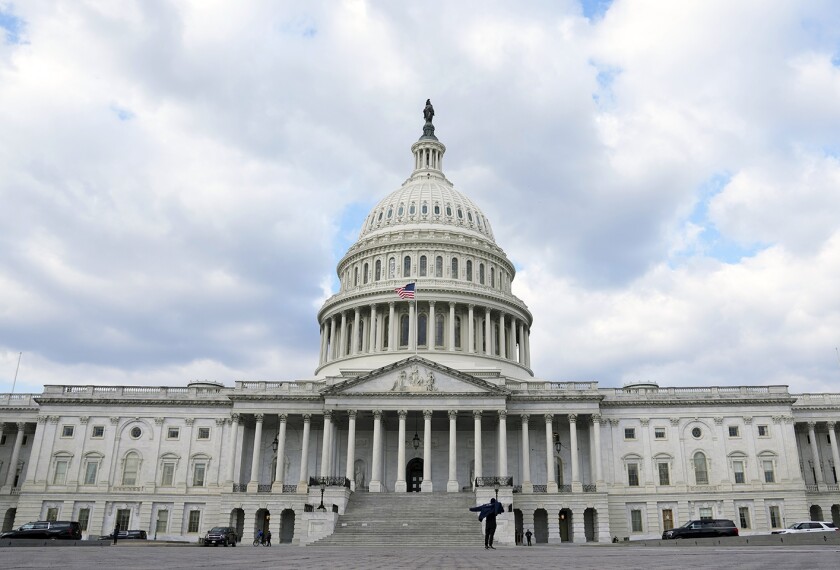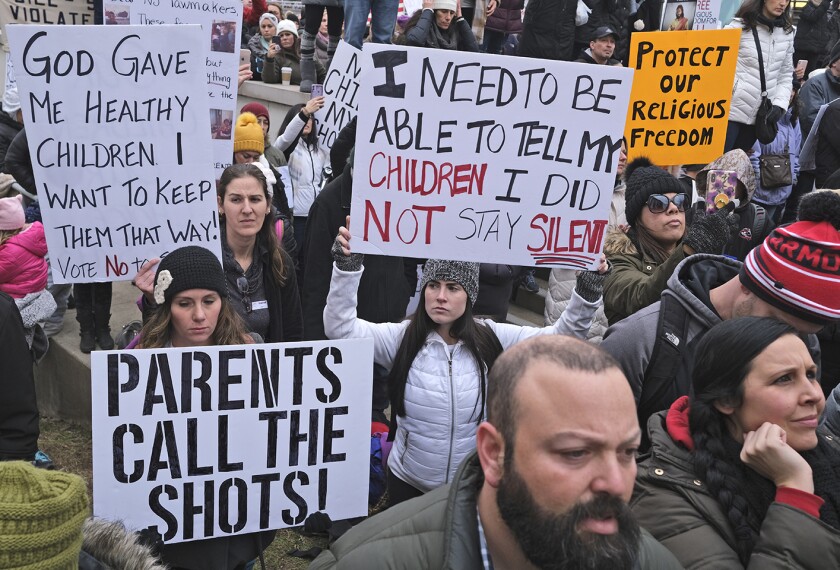In a move likely to raise the profile of teachers’ contracts as a force in school success or failure, education policymakers and union leaders came together here last week under the auspices of the National Governors Association for a mutual look at collective bargaining.
The meeting largely lived up to its billing as a “new dialogue,” with civil expression of sometimes starkly different views about how the process should change to raise student achievement. The conference drew some 100 people representing nine states, for what organizers described as the first state-focused conversation on the topic between teachers’ union and education-agency leaders.

“We’ve taken the first step in having a very public discussion and trying to figure out the state’s role in the discussion,” said Dane Linn, who heads the education division of the NGA’s Best Practices Center. The center hosted the Dec. 10-11 gathering along with Gov. Donald L. Carcieri of Rhode Island, several Rhode Island organizations, and the Annenberg Institute for School Reform and the Urban Education Policy Program at Brown University in nearby Providence.
“It’s a little bit of a leap of faith to bring to fruition a conference like this, because the groups are often seen at loggerheads,” Gov. Carcieri, a Republican, said.
Problems Spotted
Rhode Island’s Educational Partnership, a citizen and business group that was one of the meeting’s sponsors, stirred up local public interest in teacher contracts with reports this year and last comparing contract provisions from district to district. But the governor said it was in beginning to use an NGA grant for high school improvement that he saw problems with teacher-bargaining agreements. Given stiff global competition, especially from Asian nations, he said, the nation’s standard of living and its system of public schools will face unprecedented threats if students go unprepared.
In a talk that kicked off the discussion, Andrew J. Rotherham, a co-director of the Washington-based research and policy group Education Sector, advised steering a course between those who contend unions are the “root cause” of underachievement and those who maintain they have nothing to do with it.
The problem, he argued, is much more that teachers’ unions have grown conservative and, like other educational institutions, have failed to keep up with the escalating demands on schools. They can be protective of teachers’ rights at the expense of teachers’ opportunities and, worse, student achievement, especially for the most disadvantaged children, said Mr. Rotherham, who was an education adviser to President Clinton.
“I’d argue [the unions are] not living up to their promise as the powerful, tectonic institutions they are,” he said, allowing for some exceptions such as the United Federation of Teachers’ two charter schools in New York City and a new pay plan for teachers crafted in part by the Denver Classroom Teachers Association.
To help end collective bargaining that deals an unfair hand to students, Mr. Rotherham called for greater openness about the contracts and participation by more groups in framing them.
Who Wields the Power?
In a discussion that took on state law as a context for bargaining, the panelists split sharply over whether the “scope of bargaining,” a matter generally set by the state, should be broad or narrow.
Alan D. Bersin, who recently stepped down as the California secretary of education and formerly headed the San Diego schools, said that teachers aren’t necessarily ready to set the agenda for reform.
“You may have a system requiring a very strong dose of knowledge-building,” he said. “There’s going to be a period where top-down is necessary: They call it leadership.”
But Randi Weingarten, the president of the New York City teachers’ union, said that as the most important “agents” for raising student achievement, teachers are a fundamental part of any school improvement equation. The alternative to teacher participation in setting policy for curriculum and instruction is, at best, she said, a mentality of compliance with rules as opposed to responsibility for results.
The two even disagreed, calmly, over where power lay. Mr. Bersin held that the union is “the most powerful institution in the sector, and yet they constantly feel under seige.” Ms. Weingarten countered that the union is the “secondary player” because it can block but generally not implement changes. “Management has far more power to say ‘yes’ than we do,” she said.
Brad Jupp, who as a union leader headed the successful overhaul of Denver’s pay system for teachers, agreed with Ms. Weingarten that state law should allow districts and unions to “bargain anything.”
In a presentation, he said that to make the deal in Denver, which required school board, union, and voter support, the union and the district had initially agreed only “to say ‘maybe’ together” with a plan for researching and devising a new system.
“We pushed the envelope of collective bargaining,” said Mr. Jupp, who before he began working as an adviser to the Denver superintendent was a member of the National Education Association.
Although the American Federation of Teachers was well represented among the presenters, Mr. Jupp was the only speaker with an NEA connection. Organizers said NEA officials had been “equally invited” to make presentations. A spokeswoman for the union suggested that its top officers might have been busy with governance meetings.
The kind of change wrought in Denver will not necessarily be easy to come by, said Valerie Forti, who helped organize the conference as the president of the Educational Partnership. “I see the sliver of the sun on the horizon,” she said. “It’s not like the issue is bowling at anybody.”
But Steven F. Smith, the president of the Providence, R.I., teachers’ union, pronounced himself satisfied. He said he had feared that the gathering would focus on changing collective bargaining laws.
“I’m pleased the discussion evolved into really talking about collaboration,” Mr. Smith said, “about unions working together with districts and states.”





